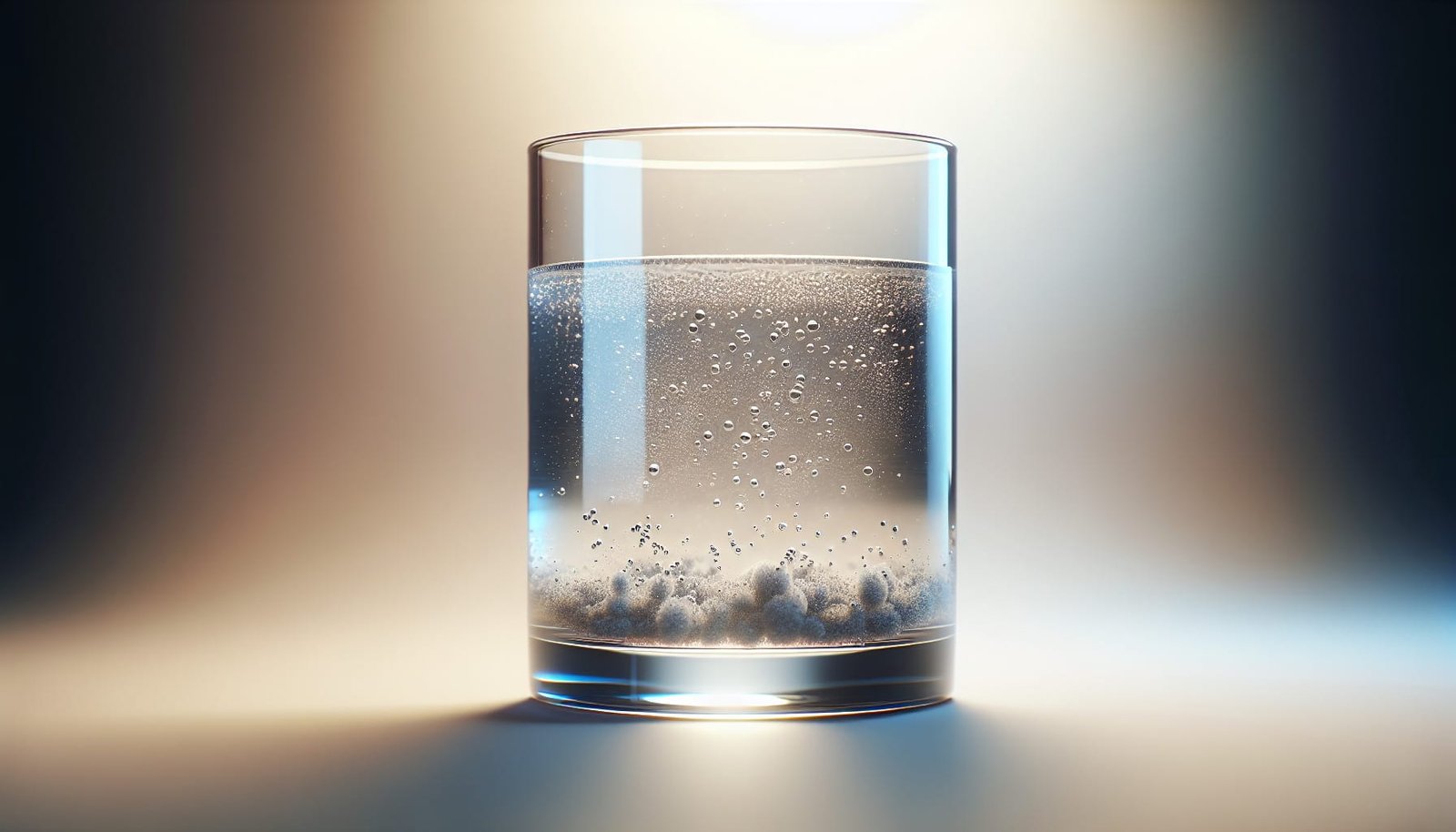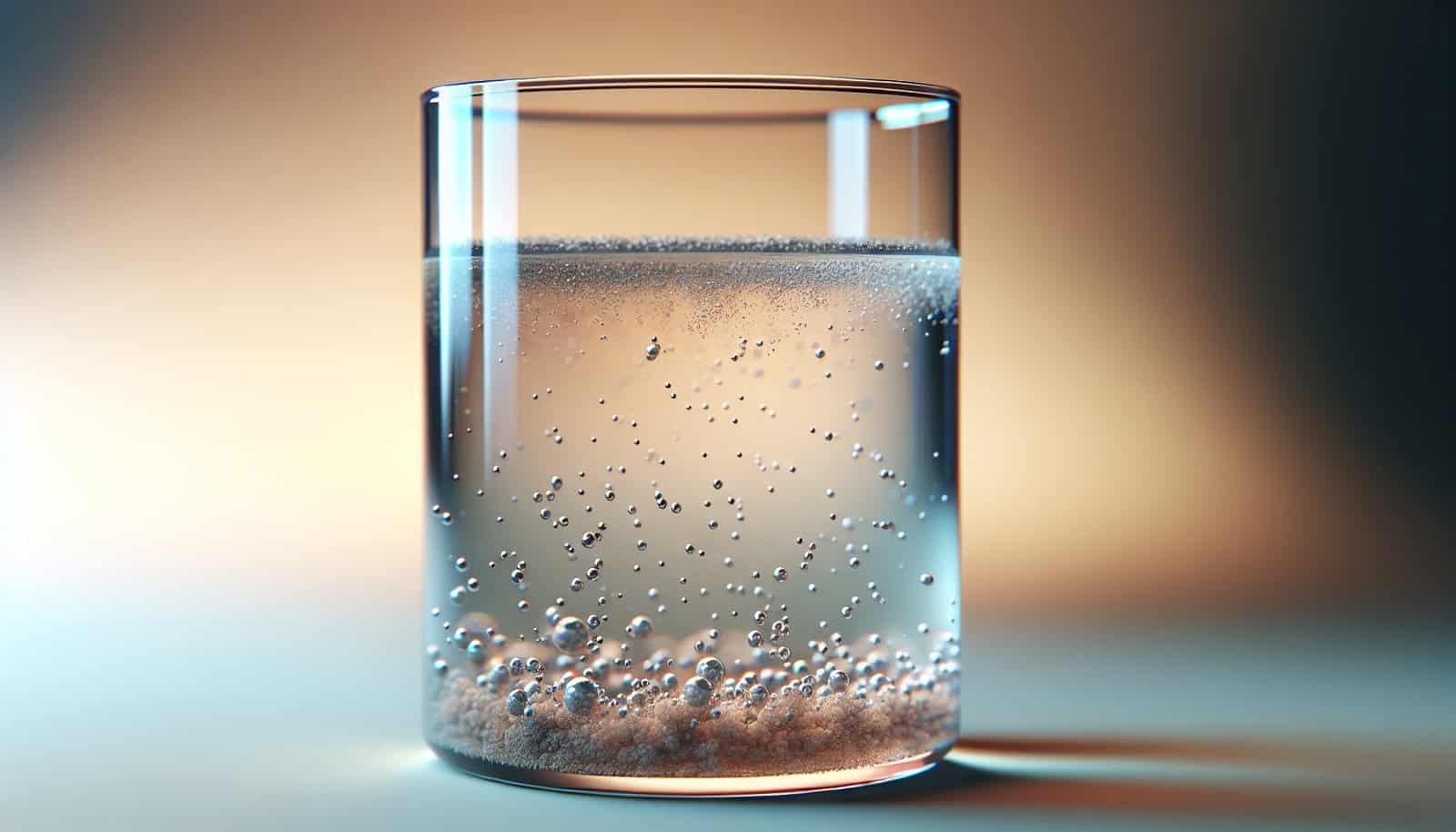Is your well water coming out cloudy, milky, or rusty when you turn on the tap?
How Do I Fix Cloudy Well Water?
Cloudy well water is a common concern for homeowners who rely on private wells. You want safe, clear water for drinking, bathing, and daily use, and cloudy water can feel alarming even when it turns out to be harmless. This article walks you through causes, diagnosis, testing, treatment options, and maintenance so you can restore clear water and keep it that way.
Why cloudy water matters to you
Cloudy water can be caused by harmless air or by particles and contaminants that affect taste, staining, and health. You’ll learn how to tell the difference, whether immediate action is needed, and which fixes are DIY-friendly versus those that require a pro.
What exactly causes cloudy well water?
Understanding the cause is the first step to fixing the problem. Cloudiness (turbidity) can come from air, suspended solids, dissolved minerals, biological growth, or pipe corrosion. Each cause looks and behaves differently and needs a different solution.
Air in the pipes (aeration)
If the water looks milky at the faucet but clears from the bottom of a glass over a minute or two, air is likely the culprit. Air often enters after pump work, power outages, or when the water level in the well fluctuates. It’s usually harmless but annoying.
Sediment and suspended solids
Sand, silt, and tiny rock particles produce a cloudy or gritty appearance, especially after heavy rains, well work, or when the well screen starts to fail. Sediment will settle if you leave water still, and it can damage appliances and clog fixtures.
Dissolved minerals and colloids
Fine clay, iron, manganese, and colloidal silica can remain dispersed and may not settle quickly. Iron and manganese can cause discoloration (red, brown, or black) and staining, and colloidal particles can keep water permanently hazy.
Biological growth and organics
Algae, bacteria, or organic matter can create cloudiness and often produce odors or slime. Biological contamination is a health concern and requires prompt testing and disinfection.
Corrosion and pipe scale
If your pipes are old or your plumbing materials react with water chemistry, corrosion products and scale can cloud water and affect taste. This can be worse after changes in water chemistry (like shock chlorination or softener changes).
Temperature and pressure effects
Hot water pipes and water heaters sometimes show cloudiness due to dissolved gases being released when water heats. Rapidly opening a faucet can also aerate water and create a temporary cloudy appearance.

How to diagnose the type of cloudiness
You don’t need fancy tools to do some basic diagnostics. A few simple tests at home will help narrow down the likely cause so you can choose the right solution.
Visual and settling test
Fill a clear glass with water and let it sit for 10–15 minutes. If the cloudiness rises to the top and clears from the bottom, or the water becomes clear, air or tiny bubbles are probably present. If particles settle to the bottom, you’re looking at sediment.
Cold vs hot water comparison
Run cold water and hot water from separate taps. If only hot water is cloudy, the problem may be the water heater (scale or trapped air in the tank). If both are cloudy, the issue is upstream — the well or main plumbing.
Faucet and fixture check
Try different faucets: outside spigots, laundry, kitchen cold tap, bathroom sink. If only one faucet is cloudy, the problem is likely local (a faulty aerator, a corroded pipe, or a cartridge). If all outlets show cloudiness, the well or main supply is the likely source.
After pumping or rainfall
If the cloudiness started after heavy rain, well work, or pumping operations, sediment or changes in water table and turbidity are likely. Cloudiness that follows power outages or pump repairs could be from air in the system.
Smell or color clues
If cloudiness comes with a metallic, rotten-egg, or musty odor, or with brown, red, or black staining, note that. These signs point to iron/manganese, hydrogen sulfide, or organic contamination.
When should you test your well water?
If visual checks don’t clearly point to a harmless cause like air, you should test. You should also test if you notice changes in taste, odor, color, staining, or if anyone in the household is getting sick.
Basic home tests and professional lab testing
Home test kits can screen for common parameters: pH, hardness, iron, nitrates, chlorine, and bacteria. They’re convenient but not always precise. A certified lab test is the gold standard and required if you suspect bacterial contamination or need results for regulatory or safety reasons.
Recommended tests for cloudy water
- Turbidity (NTU) — measures cloudiness
- Total coliform and E. coli — bacteria
- Iron and manganese — common staining metals
- Hardness (calcium, magnesium)
- pH and alkalinity — affect corrosion and treatment
- Nitrate/nitrite — health concern for infants and pregnant people
- Total dissolved solids (TDS) — overall dissolved mineral load

Quick step-by-step troubleshooting checklist
Follow these steps in order to diagnose and treat cloudy water efficiently.
- Observe: Note when cloudiness happens (all the time, after pump runs, only in hot water).
- Clear tests: Fill a clear glass and let it sit; check hot vs cold; try multiple taps.
- Home testing: Use a basic kit for bacteria, iron, pH, and hardness if available.
- Professional testing: If results are unclear or water has bacteria, arrange lab testing.
- Temporary measures: Use bottled water for drinking if bacteria or contaminants are suspected.
- Treat based on cause: Air — bleed tanks/purge air; sediment — install pre-filters; iron — iron removal; bacteria — shock chlorination and follow-up tests.
- Monitor and maintain: Keep a schedule for filter changes, well inspections, and annual testing.
Treatment options by cause
Once you identify the cause, choose the appropriate treatment. Some fixes are simple and low-cost; others require equipment or professional installation.
If air is the cause
Air in the water is harmless; it’s solved by removing air from the system and identifying why air entered.
- Bleed the system: Open faucets starting from the highest point to the lowest until water runs clear.
- Check the pressure tank: A waterlogged pressure tank or a failed bladder can introduce air. Service or replace the tank if needed.
- Inspect the pump and suction line: Leaks or damaged seals can draw in air. A well contractor can inspect and repair.
If sediment or sand is present
Sediment can damage pumps and appliances. Look for a sudden increase after storms or an old, damaged well screen.
- Spin-down pre-filter: Install a 50–100 micron spin-down filter as a first line of defense.
- Sediment cartridge filter: Use progressively finer cartridges (e.g., 50 μm, 10 μm, 5 μm) to protect appliances and remove fine particles.
- Backwashing multimedia filter: For heavy sediment, a backwashing sand or multimedia filter cleans itself and handles higher loads.
- Well repairs: If sediment persists, you may need well cleaning, well screen replacement, or a deeper well.
If iron and manganese cause cloudiness and staining
Iron and manganese cause rusty or dark cloudiness and can stain fixtures and clothing.
- Oxidation followed by filtration: Air injection, chlorination, or chemical oxidants (potassium permanganate) convert dissolved iron into solid particles that can be filtered.
- Greensand or manganese dioxide filters: These media-based filters remove oxidized iron and manganese.
- Water softener: A conventional softener can remove small amounts of dissolved iron but can be overloaded or fouled by large iron loads.
- Oxidizing filters + backwash: For higher concentrations, a combination of oxidation and backwashing filter media works best.
If biological contamination is suspected
Bacterial growth is a health issue. Don’t drink the water until tests confirm safety.
- Shock chlorination: A well shock with household bleach following recommended protocols can disinfect the well and piping.
- Follow-up testing: After shock chlorination and flushing, test for coliform and E. coli to confirm the disinfection was successful.
- Ongoing protection: Fix well construction issues (cap, seal), keep the area sanitary, and consider continuous disinfection like chlorination or UV if bacteria recur.
If dissolved colloids or silica cause persistent haze
Colloidal particles and silica don’t settle easily and require specialized filters.
- Ultrafiltration or membrane filtration: These remove extremely fine particles and colloids.
- Activated carbon isn’t effective for colloids; ultrafiltration or nano/RO systems are better options depending on concentrations.
If your water heater is the source
If only hot water is cloudy, check the water heater for sediment and trapped air.
- Flush the water heater: Drain and flush to remove sediment and release trapped gases.
- Check temperature and pressure relief valve: Ensure proper operation to avoid pressure-related aeration.

Table: Causes, signs, and typical fixes
| Cause | Typical signs | Short-term fix | Long-term solution |
|---|---|---|---|
| Air in water | Milky, clears from bottom in minutes | Run faucets; bleed system | Fix pressure tank/pump leaks |
| Sediment (sand/silt) | Particles visible, settle in glass, gritty feel | Let settle; strain | Spin-down, cartridge, or backwash filters; well repair |
| Iron/Manganese | Red/brown/black staining, metallic taste | Flush; use point-of-use filter | Oxidation + filtration (greensand, manganese dioxide), iron-specific systems |
| Colloids/silica | Persistent haze, doesn’t settle | Bottled water for drinking | Ultrafiltration/RO or membranes |
| Bacteria/organics | Odor, slime, positive coliform test | Don’t drink; shock chlorinate | Sanitary well repair, continuous disinfection, well maintenance |
| Corrosion/scale | Metallic taste, particles from pipes | Replace aerator, flush | Re-pipe, adjust pH, corrosion control |
Cost estimates and lifespan
Costs vary by region and water quality. These estimates give a general idea.
| Solution | Typical installed cost (USD) | Lifespan / Maintenance |
|---|---|---|
| Spin-down pre-filter | $50–$300 | Replace screens yearly/minimum |
| Sediment cartridge system | $100–$800 | Cartridges replace every 3–12 months |
| Backwashing sand/multimedia filter | $800–$3,000 | Media ~5–10 years; annual service |
| Iron filter (greensand/mn dioxide) | $1,000–$4,000 | Media recharge/service as needed |
| Water softener | $800–$3,500 | Resin ~10–15 years; salt regularly |
| UV disinfection system | $400–$2,000 | Lamp replacement yearly |
| Shock chlorination (DIY) | $20–$100 | Repeat if contamination recurs |
| Well inspection and repair | $300–$3,000+ | Varies by problem |
| Well rehabilitation (deep cleaning) | $500–$5,000+ | Depends on well depth/condition |
Note: Prices are ballpark. Always get multiple quotes and check local contractors.

How to collect a water sample for lab testing
Proper sampling is crucial so lab results are accurate and useful.
- Use sterile bottles from the lab or health department. Don’t use random containers.
- Run the water for a few minutes before sampling. Use a cold-water tap without aerators.
- Disinfect the faucet tip with alcohol or flame if instructed.
- Fill the bottle to the indicated level and seal tightly.
- Keep the sample cool and bring it to the lab promptly (within the time specified, usually 24 hours).
Follow the lab or health department instructions exactly for the parameter you’re testing (bacterial tests often require different handling than chemical tests).
Maintenance and prevention
Regular maintenance keeps cloudiness at bay and prevents bigger issues.
Schedule routine tests
Test for bacteria annually and for chemical parameters (iron, manganese, hardness, pH) every 2–3 years or when you notice changes.
Inspect well components
Check the well cap, casing, and the area around the well. Keep the wellhead clear of debris, chemicals, and standing water.
Maintain equipment
Service pressure tanks, pumps, and filtration systems per manufacturer recommendations. Replace filters and media on schedule.
Protect the recharge area
Avoid storing fuels, pesticides, or animal waste near the well. Ensure proper drainage away from the well.

DIY fixes you can try safely
Some issues can be fixed without a pro, while others need licensed well contractors.
- Bleed fixtures and flush the system for aeration problems.
- Replace faucet aerators and clean them if only one tap is affected.
- Install or change a sediment cartridge filter for mild sediment.
- Flush the water heater if hot water is cloudy.
- Shock chlorinate the well following reliable guides and test afterward.
- Use bottled water for drinking until bacterial contamination is ruled out.
If you’re uncomfortable, unsure, or dealing with contamination, call a professional.
When to call a professional
Call a licensed well contractor or water treatment specialist if:
- Tests show bacteria, nitrates, or other health-related contaminants.
- The problem is persistent after basic fixes.
- You need well rehabilitation, screen replacement, or well deepening.
- The pressure tank is suspected to be failing.
- You need a properly engineered treatment system (iron filtration, ultrafiltration, chlorination systems).
Professionals can perform downhole inspections, pump tests, and design treatment systems tailored to your water chemistry.
Safety and health considerations
If you suspect bacterial contamination (coliforms, E. coli), stop using the water for drinking, cooking, or brushing teeth until tests show it’s safe. Boiling does not remove chemical contaminants; it only disinfects microbiological risks. For long-term chemical or heavy metal contamination, follow lab and public health guidance.
Frequently asked questions
Is cloudy water dangerous?
Not always. If cloudiness clears within minutes it’s likely air and harmless. If it’s associated with odor, staining, or positive bacteria tests, it can be harmful. Always test if you’re unsure.
Can a water softener fix cloudy water?
Water softeners help remove hardness and small amounts of iron but are not designed for heavy sediment, biological contamination, or colloids. Use a softener as part of a system rather than as a single fix for cloudy water.
How long does shock chlorination take to clear bacteria?
Shock chlorination disinfects quickly, but you should wait the recommended contact time (usually several hours) and then flush. Retest for bacteria at least 7–10 days after treatment and again after a couple of weeks if needed.
What is turbidity and what is an acceptable level?
Turbidity is a measure of suspended particles in water. The EPA uses turbidity standards primarily for public systems; private wells have no regulatory threshold, but you should aim for clear water and consult a lab if turbidity is measurable. As a general indicator, turbidity below 1 NTU is typically considered low.
Action plan you can follow today
- Do the glass settling test and check multiple taps.
- Compare hot and cold water behavior.
- Replace faucet aerators and clean screens.
- Install a basic sediment filter if you see particles.
- If bacteria are suspected, stop drinking the water and arrange lab testing.
- If iron or manganese is suspected, do a test and consult a water treatment professional for oxidation/filtration options.
- Schedule annual testing and a well inspection.
Final thoughts
Cloudy well water can be caused by many different factors — from harmless air to serious contamination. By observing, testing, and using the right treatment based on the cause, you can restore clear, safe water. Start with simple diagnostics and basic fixes, and bring in a qualified professional when tests identify health risks or when equipment repairs and specialized treatment are needed. With proper maintenance and timely action, you’ll have clear water flowing from your taps again.
